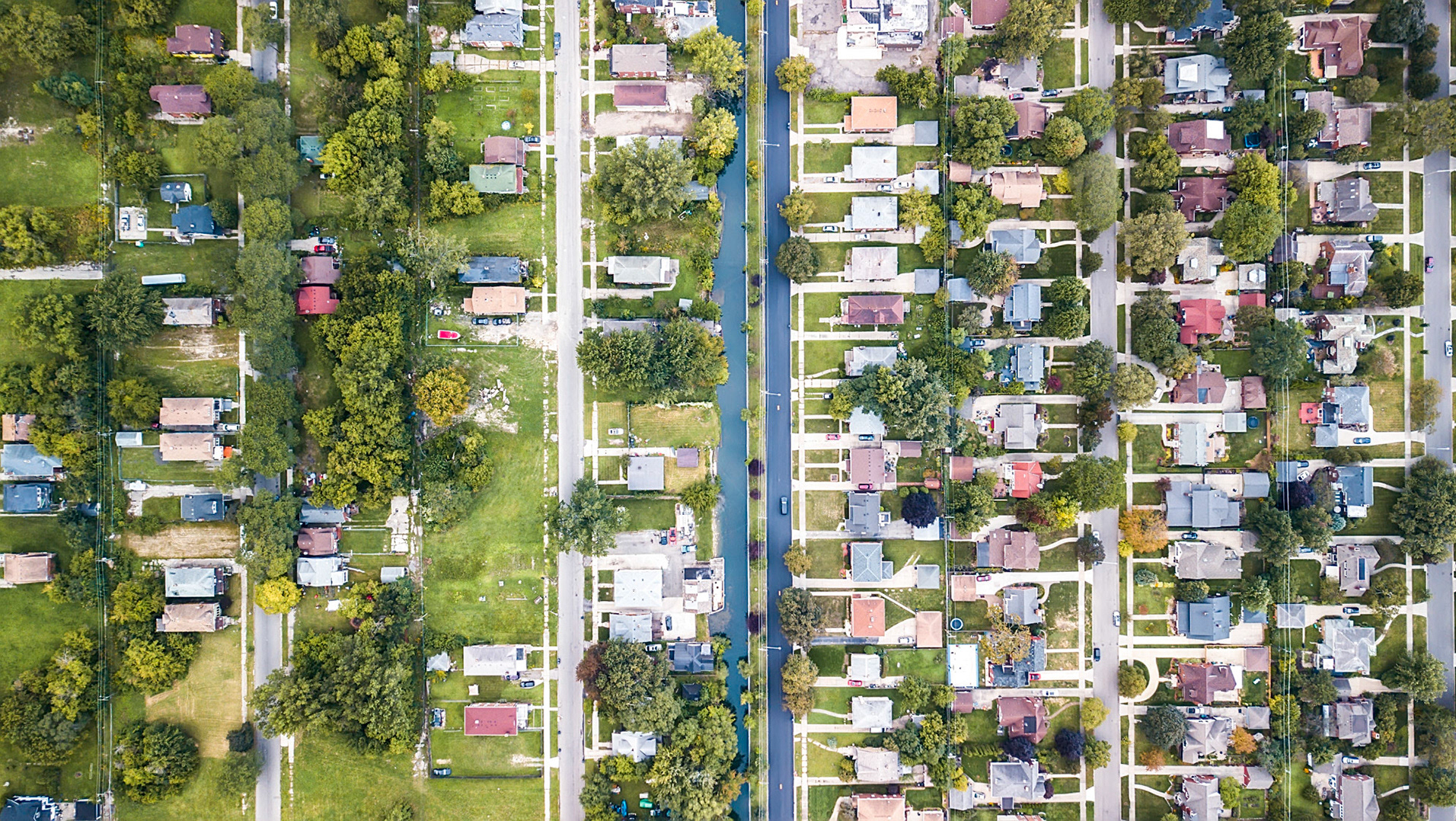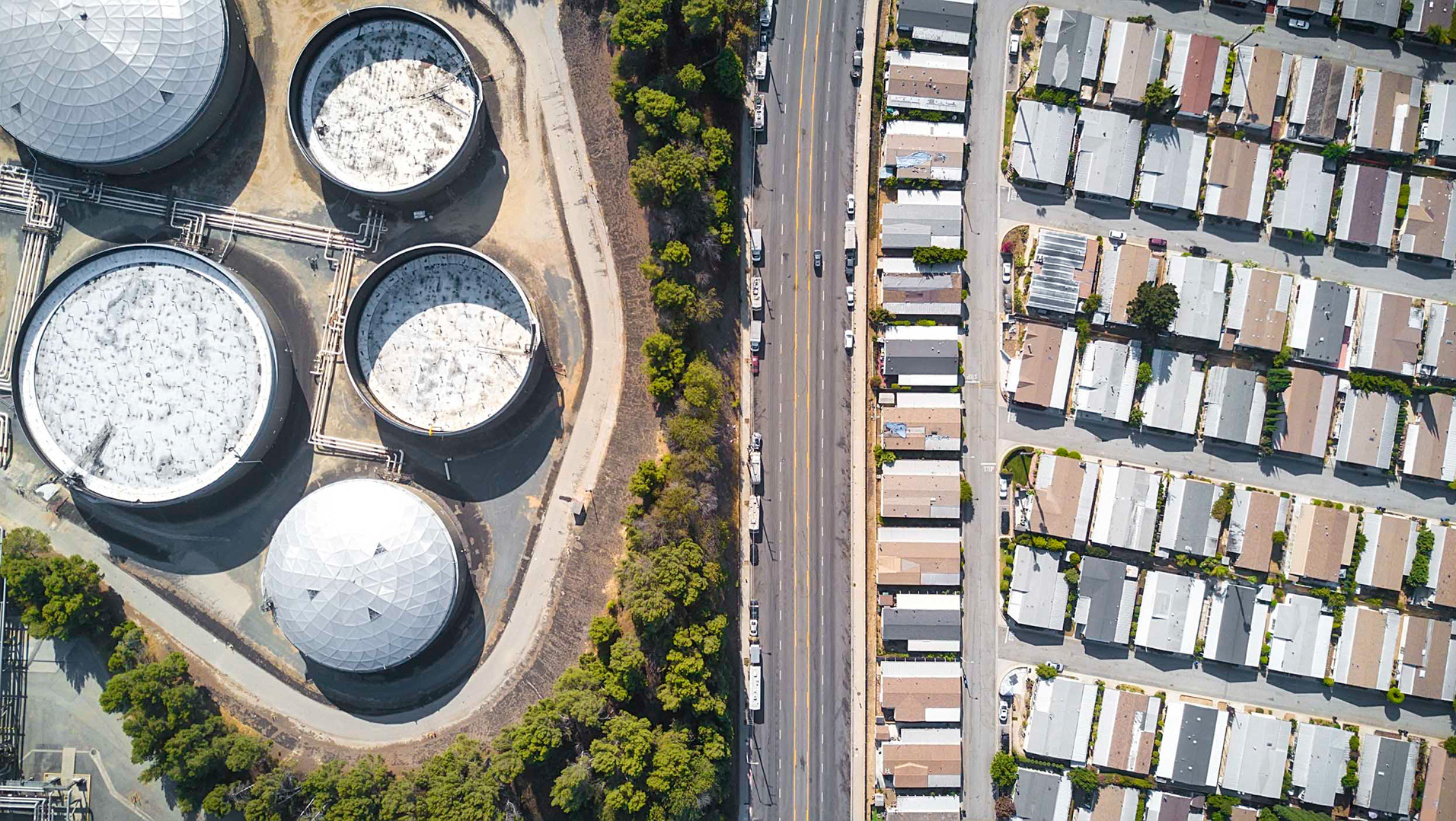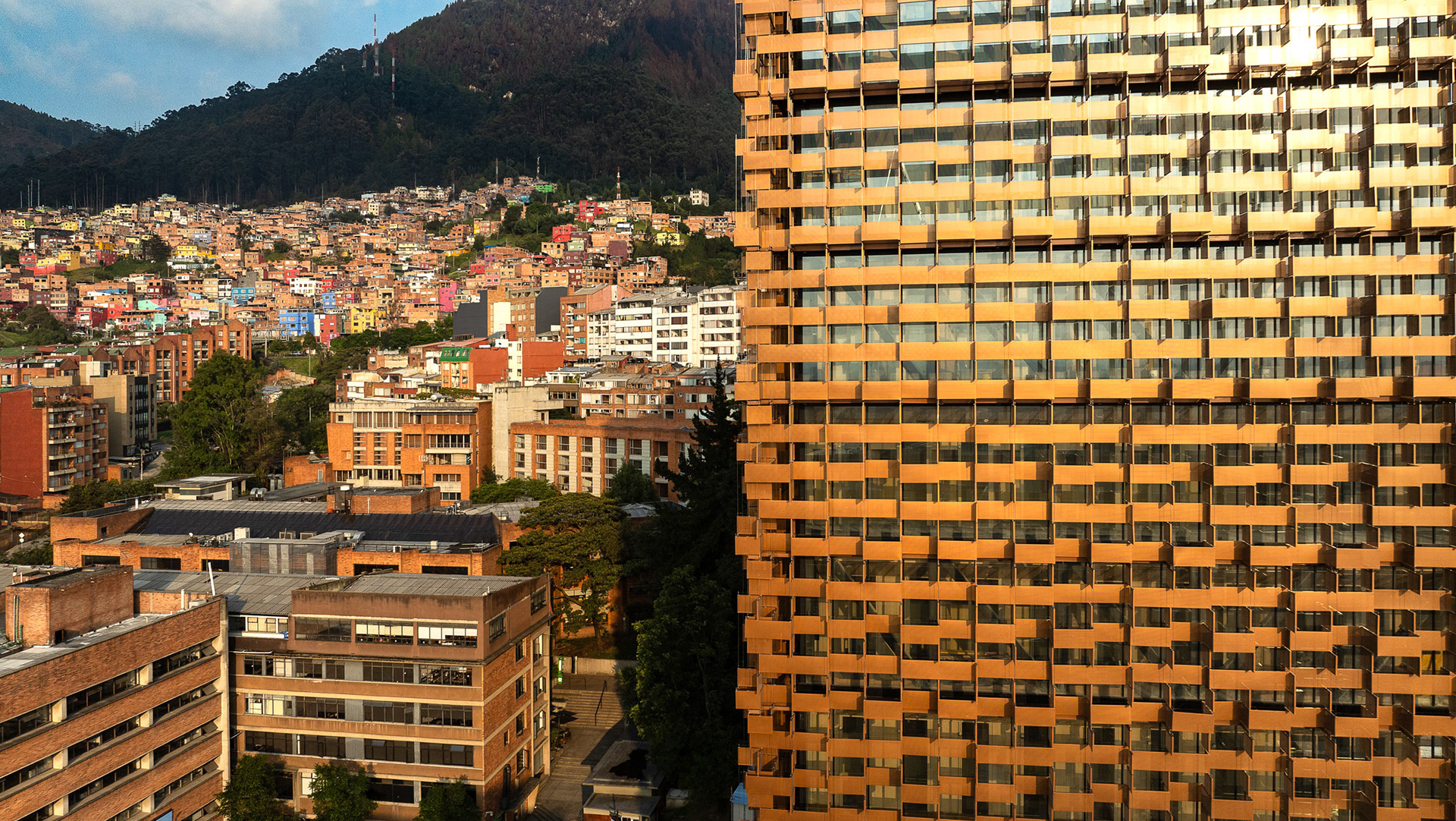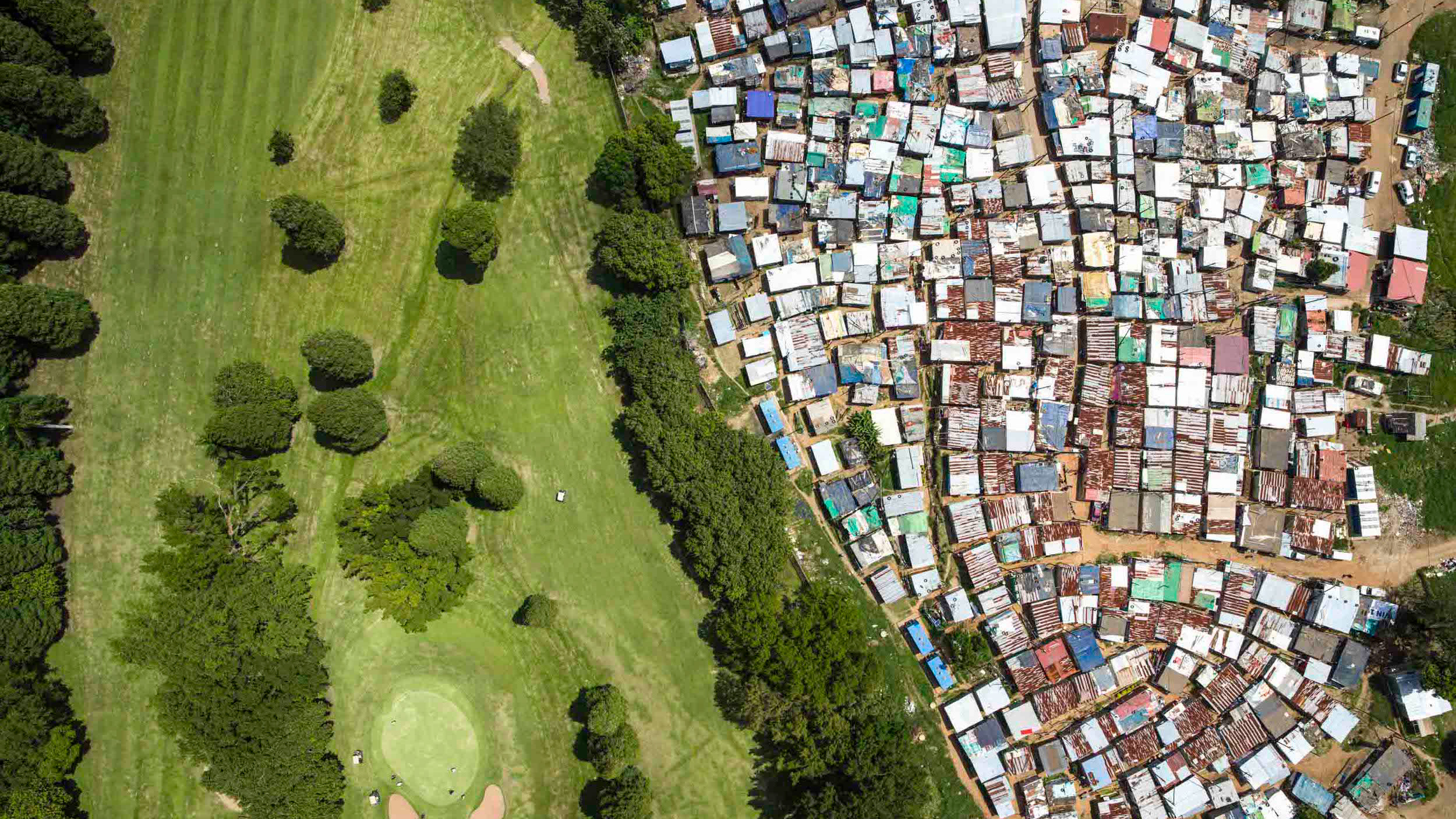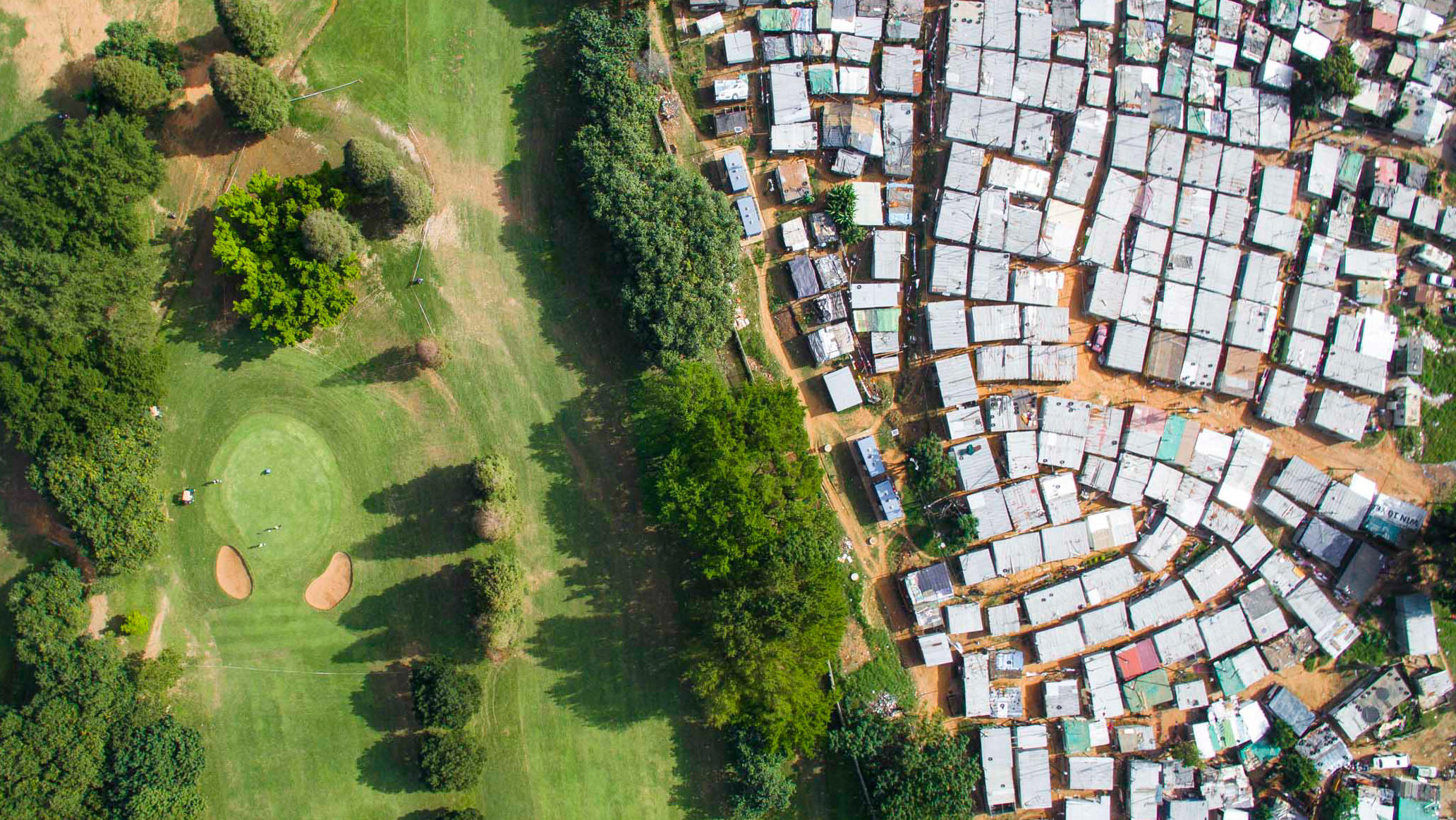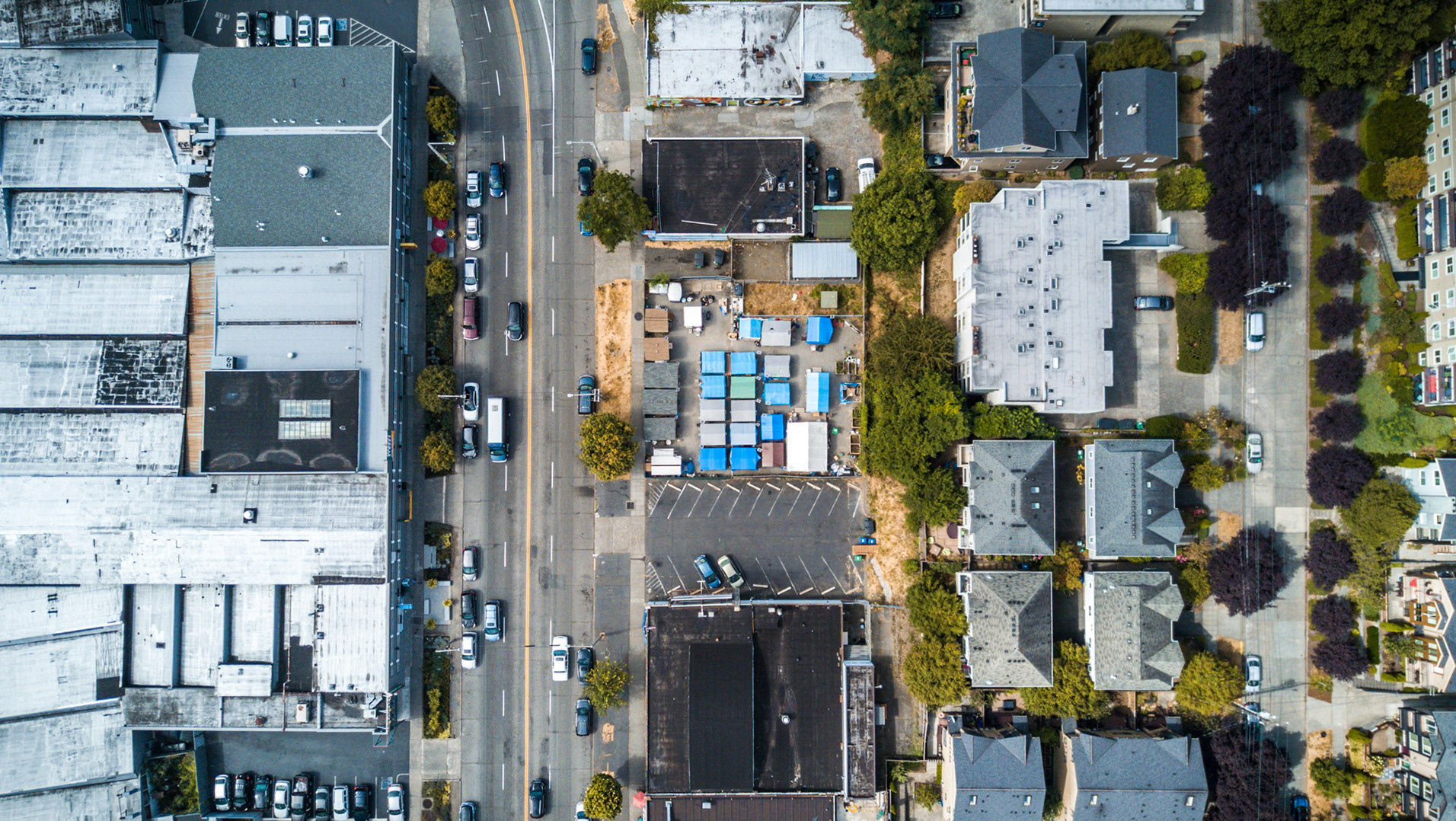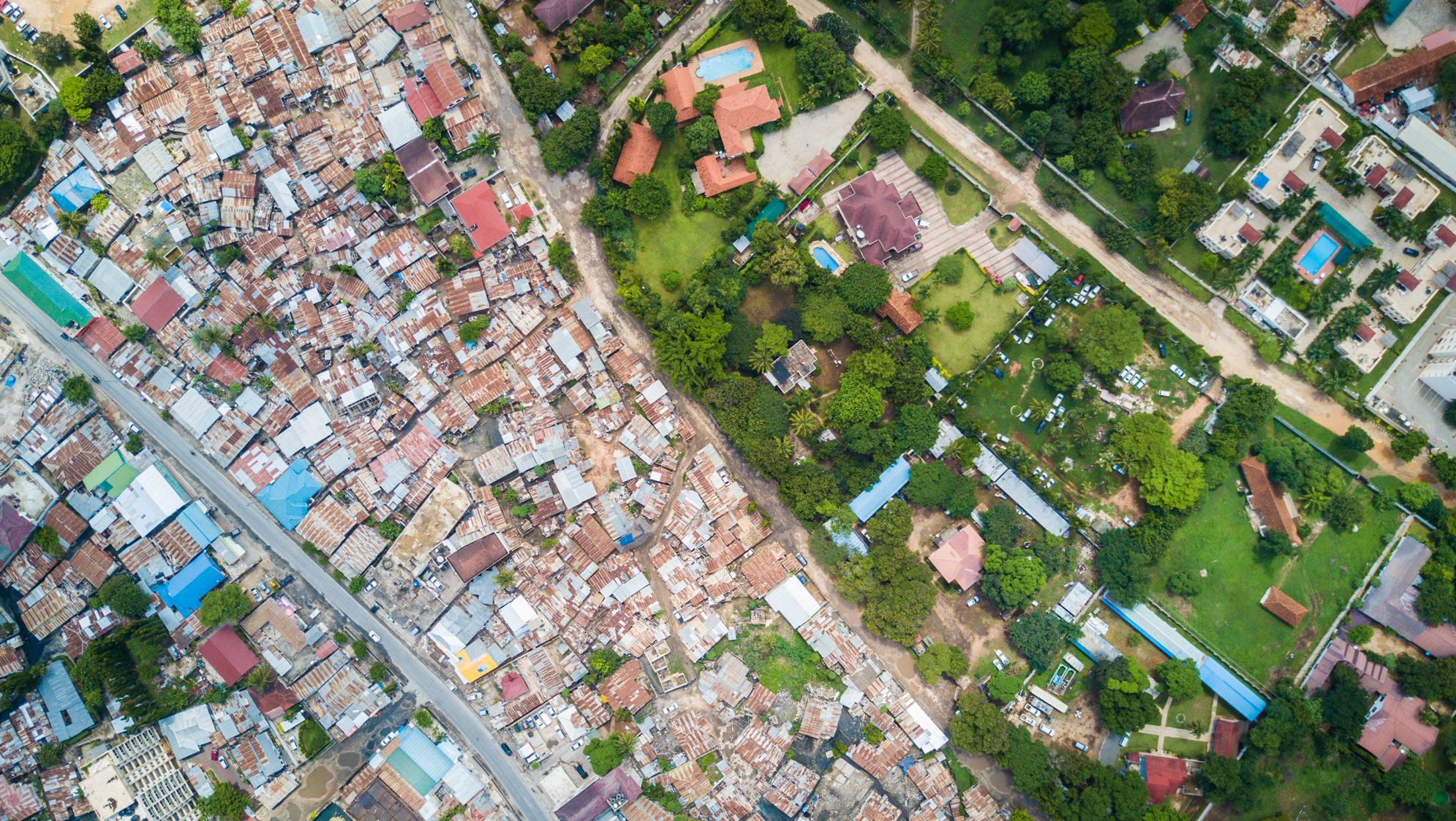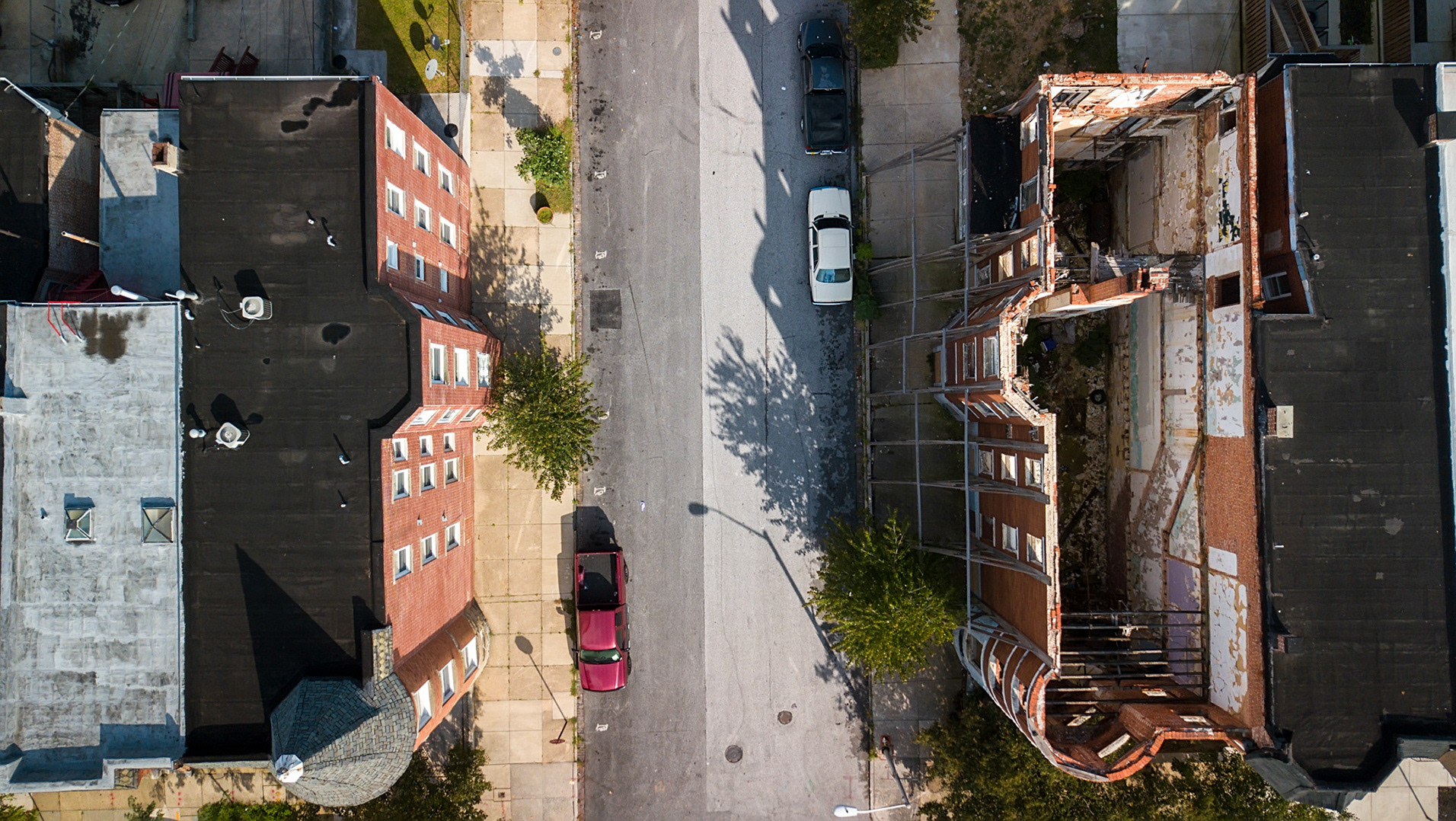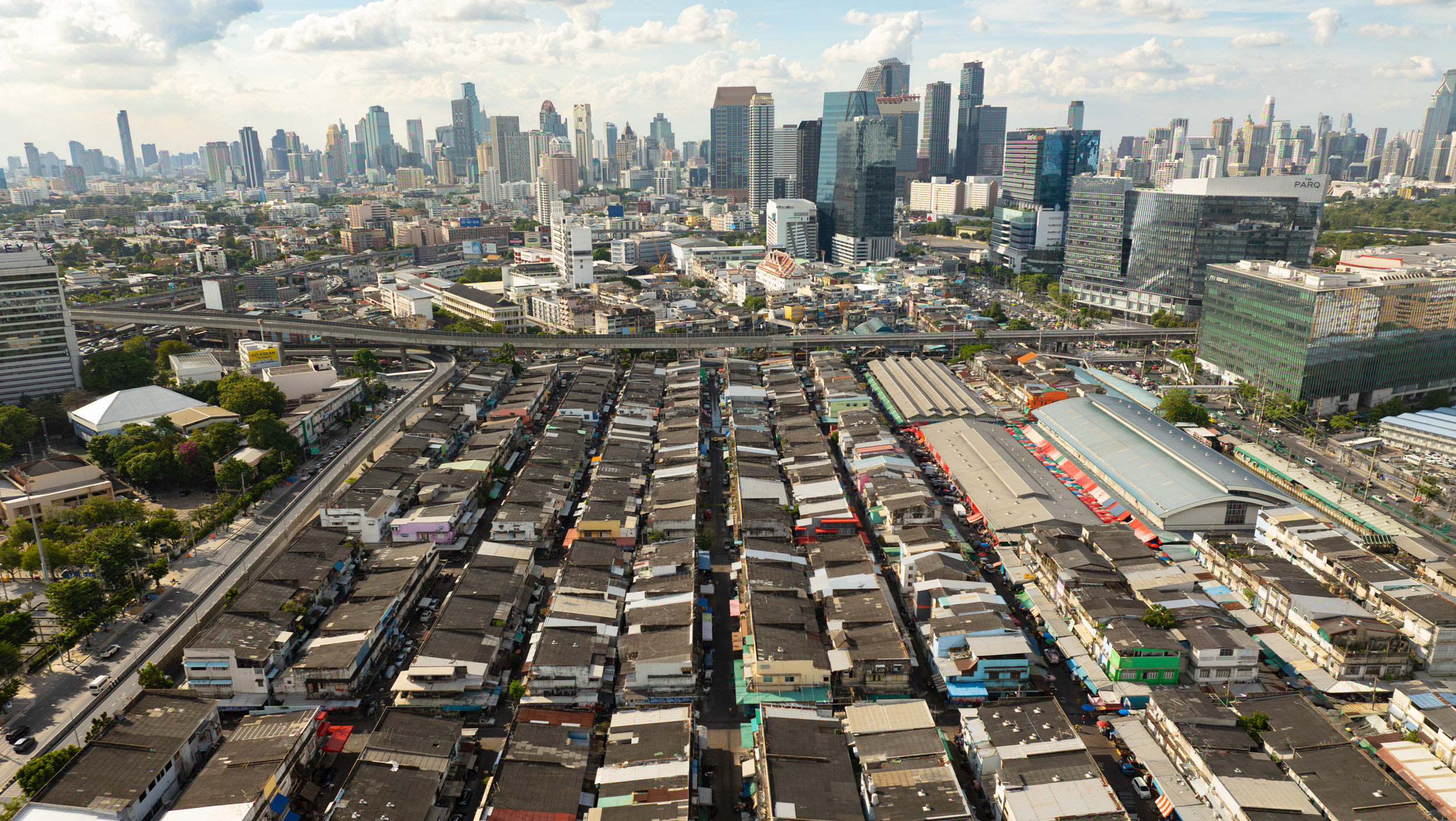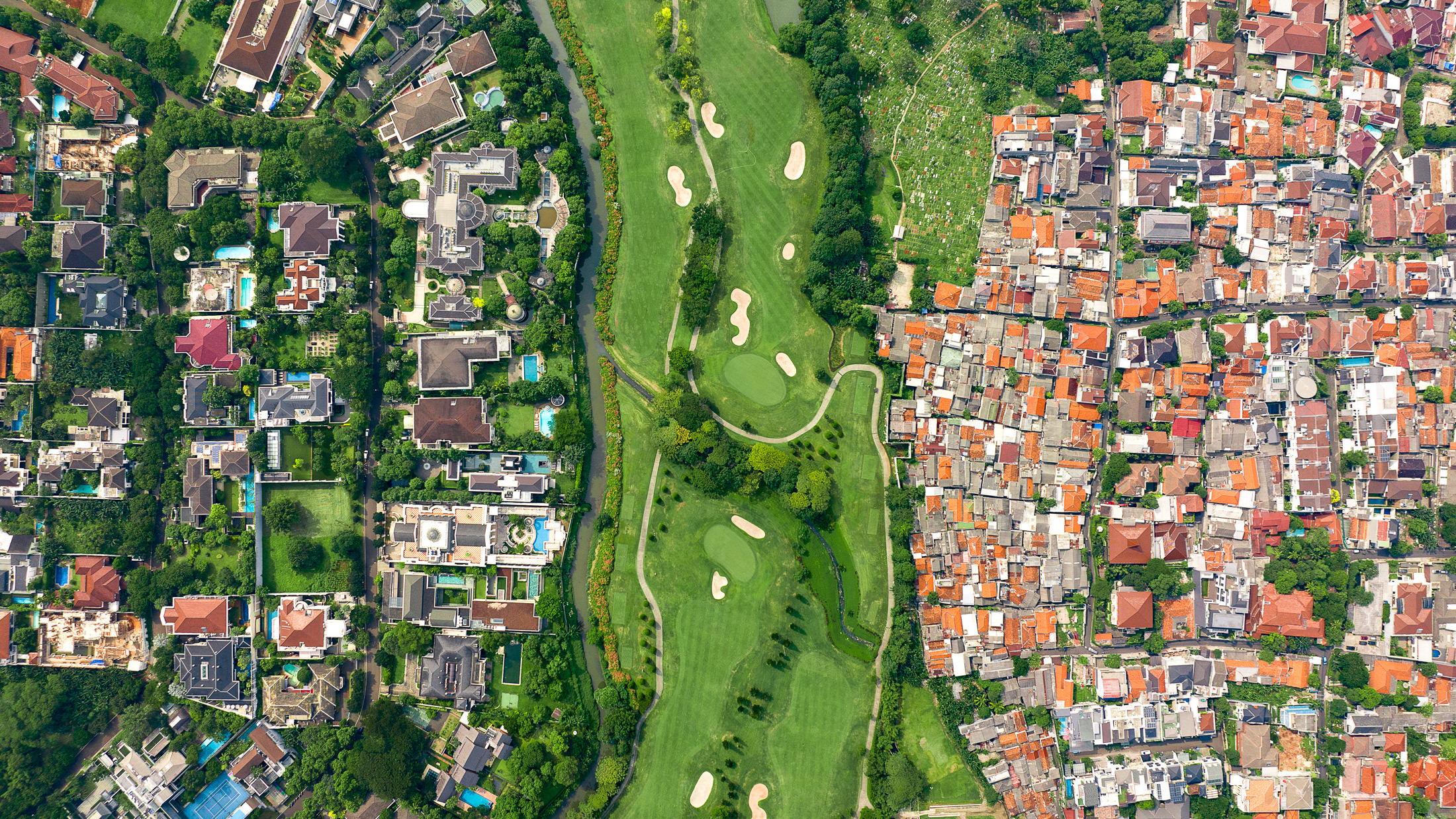The “France Colony” slum in the center of Islamabad is predominantly made up of Christians, who live alongside wealthy Muslim households and often perform menial duties such as cleaning and recycling for them. Christians make up less than 5% of the population of Pakistan, however in the capital their obvious slum “colonies” are a thorn in the side of the local government, and many have been dismantled, removed and targeted, although “France Colony” remains resilient.
While inequality may not be as pronounced as its neighbor India, Pakistan still has a higher concentration of wealth in the top 10% than many OECD countries, and high rates of gender, sexual identity, and environmental inequality. As the country struggles with an economic crisis and most recently, devastating floods, the outlook remains challenging even as the security situation steadily improves.
The "100 Quarters" Christian colony in the center of Islamabad.
The difference between Rawalpindi (left) and the planned city of Islamabad (right).
"France Colony", a Christian slum much poorer than the surrounding, planned city of Islamabad.
Karachi's sprawl extends to the edge of the Indus River delta, a massive biodiversity hotspot steadily being reduced by climate change and human activity along its edges.
New, affordable homes being built in Lahore to address the housing challenges for a huge and growing lower middle class population.
DHA, or Defense Housing Authority housing, is highly sought after. DHA developments are growing in popularity and spreading throughout Lahore, bounded from non-DHA housing, much of it traditional and much poorer, by wide roads and wary eyes.
DHA development in Lahore's southeast, fitting in like a jigsaw in a relentless quest for more land.
Skyscrapers emerge next to slums in Lahore, one of Pakistan's most vibrant cities.
A new DHA (Defence Housing Authority) development in the south of Lahore. Massive areas of the city are being formalized for the insatiable need to provide housing for Pakistan's lower and middle classes, looking to escape the country and move to the big cities. Dozens of cricket games are played every night on these empty streets, which will soon by bursting with residents.
The extreme difference between the classes in Lahore.
The Royal Palm Golf and Country Club, Lahore.
Chinese banks dot the sky in Karachi, Pakistan's economic hub.
Affordable homes being built, Lahore.
Afghan refugees, many of whom fled the Taliban in August 2021, live in tents in central Islamabad. Their demand is to be recognized as refugees, something that the UNHCR and the Pakistani government refuse to do as of mid-2022.
Low-income, affordable housing being built in Lahore.
Construction techniques, Lahore.
Lahore.
Inequality, Lahore.
Inequality, Lahore.
Lahore.
Karachi.
Sunset in Lahore.
Afghan refugee camp in Islamabad.
New buildings emerging in Lahore.
Karachi.

